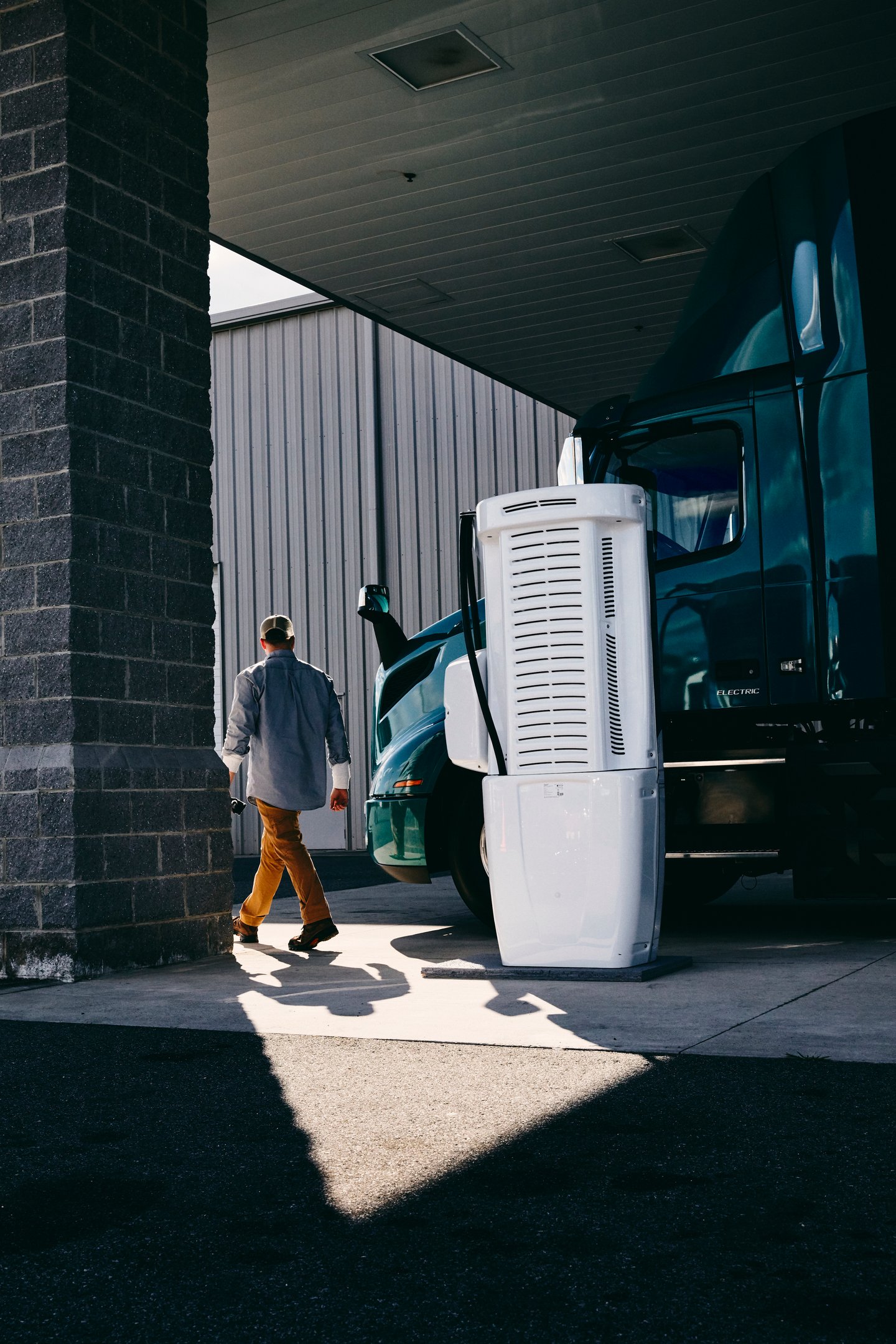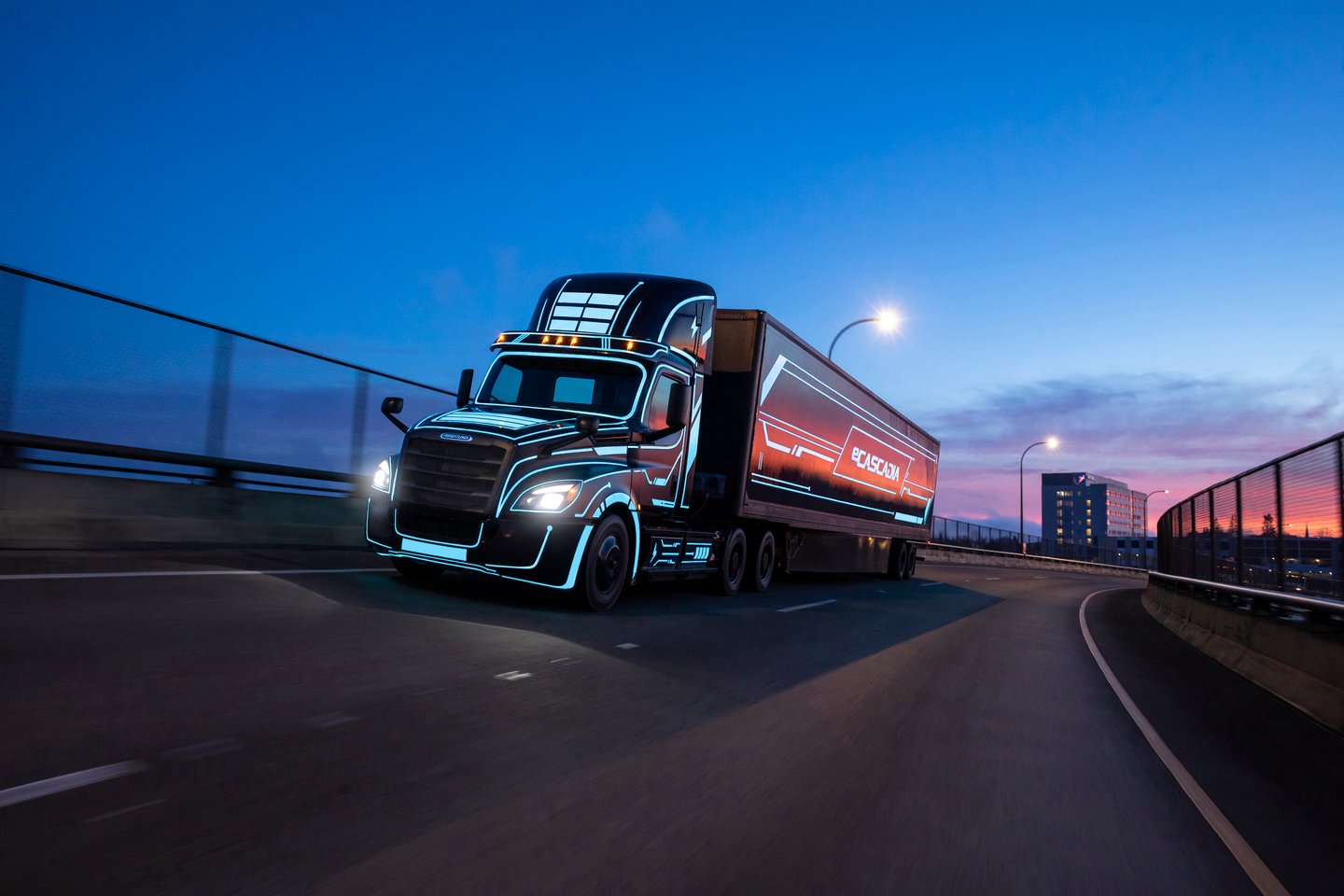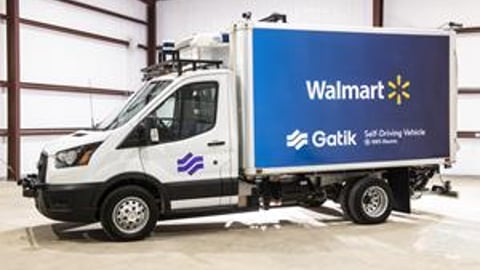Electric Semi-Trucks Enter Race Toward Reaching Zero Emissions
Boise, Idaho-based Albertsons recently made history by carrying out the country’s first commercial 100% zero-emission refrigerated grocery delivery using a class 8 battery-electric truck and refrigerated trailer. This venture is only the beginning of the industry’s exciting journey toward net zero emissions, when no new emissions are being added to the earth’s atmosphere.
While the fleet electrification movement is still in its infancy – and COVID-19 slightly slowed the momentum – all signs point to a major change in commercial vehicles coming in the next two decades, especially as logistics and infrastructure improve.
A growing number of truck manufacturers, including Volvo, Daimler Trucks and PACCAR, are already rolling out prototypes and ready-to-drive models. Globally, 334 models of electric commercial trucks are expected to launch through 2024, according to data from ACT Research, a Columbus, Ind.-based market data and research firm for the commercial vehicle and transportation markets. Of the 334 models, 281 are battery electric and 53 are fuel cell (the vast majority of electric vehicles in the U.S. market use batteries). In fact, just 10 years from now, more than a third of class 4 through class 8 trucks will be battery electric, the firm forecasts.
Skeptics may point to Tesla, whose production of the Tesla Semi has been repeatedly pushed back due to the challenge of making or sourcing a new type of battery cell in high volume. During the Palo Alto, Calif.-based company’s April earnings call, CEO Elon Musk said that volume production of 4680 cells is 12 to 18 months away. However, the company has a few prototypes on the market and reportedly plans to start a few deliveries later this year.
In the grocery industry, Albertsons is joined by companies like Walmart and Amazon that see electric trucks as the wave of the future. Bentonville, Ark.-based Walmart, which reserved 130 Tesla Semis last September, has publicly said that it aims to reach zero emissions by 2040 by gradually replacing its conventional fleet with zero-emission vehicles globally. Putting its money where its mouth is, the retailer has also invested in San Francisco-based Cruise, the only self-driving car company that operates an entire fleet of all-electric vehicles powered by 100% renewable energy. (Walmart is doing a contact-free delivery pilot using Cruise vehicles.)
E-commerce giant Amazon, for its part, has begun using electric vans that it purchased from an Irvine, Calif.-based startup called Rivian (Amazon is also a Rivian investor). The Seattle-based e-retailer aims to have 100,000 of these vehicles on the road making deliveries by 2024, and has said that it hopes to reach net zero carbon emissions by 2040.
Further, while plenty of grocery companies have experimented with using hybrid vehicles in recent years to meet their sustainability goals, analysts seem to agree that to truly reach zero emissions, the country needs a large-scale shift to battery and fuel cell electric vehicles. That’s not a matter of if, but when.
Market Drivers
There are a number of factors driving the development and adoption of electric fleets, observes Ann L. Rundle, VP, electrification and autonomy at ACT Research. These include heightened consumer concerns regarding climate change, as well as companies’ goals concerning environmental, social and governance (ESG) criteria; a push for sustainability from large fund managers in the investment community; legislation requiring lower carbon dioxide emissions; and advancements in battery and charging technology that will contribute to a more favorable total cost of ownership over time.
Essentially, it’s starting to make economic sense to “green” your fleet. When the U.S. Environmental Protection Agency launched its SmartWay program with 15 charter partners back in 2004, with the aim of pioneering freight carbon accounting and emissions reduction strategies for carriers and shippers, people were more concerned about the rising costs of fossil fuels. Today, however, most people are recognizing that climate change is real, and companies are seeing that there are economic consequences to not addressing carbon neutrality, notes Rundle. Even the major oil companies have come out in support of the movement.
Green legislation has been a major factor in the more immediate development of electric vehicles. The California Air Resources Board (CARB) has been particularly aggressive at regulating emissions. Last June, Sacramento-based CARB came out with its Advanced Clean Trucks rule, which is considered to be the world’s first zero-emission commercial truck requirement. The rule mandates that truck manufacturers sell a certain percentage of zero-emission trucks in the state of California beginning in 2024. By 2030, 50% of all commercial vehicles (class 4 through 8) sold by an OEM (original equipment manufacturer) must be zero emissions, and by 2035, that number jumps to 75%. Class 7 and 8 tractor trucks follow a less aggressive scale, with a requirement for 30% of zero-emission trucks to be sold by 2030, and 40% by 2032 through 2035.
New Jersey and New York have introduced similar legislation following California, and 13 other states and the District of Columbia are under a memorandum of understanding that they’ll follow the Golden State’s lead.
California has also introduced legislation called the Heavy Duty Omnibus rule, which aims to cut toxic air pollution from new fossil fuel trucks. It will start in 2024 and tighten in 2027. “That will start to make the diesel engine-powered vehicle become significantly more expensive,” says Rundle.
ACT Research recently published a study called “Charging Forward” that analyzes the economic case for vehicle electrification. While the initial purchase price for an electric commercial truck is definitely more expensive, fleet managers consider the vehicle’s total cost of ownership, which looks not only at the purchase price, but also the operating costs over the truck’s lifespan.
Considering the operating costs of an electric vehicle, maintenance in many cases can cost 50% less than traditional vehicles, if not more so, and it costs less to recharge your batteries than it does to fill up with diesel, observes Rundle. Meanwhile, regenerative braking results in less wear on the brakes.
ACT’s study predicts that by 2040, an electric class 8 regional truck will have a better total cost of ownership than a diesel. Even by 2027, when emissions regulations start kicking in, making diesel more expensive, an electric tractor day cab within a certain region will have a better total cost of ownership.
“There are already quite a few applications today in commercial vehicles that could be better served by a battery electric vehicle than a diesel,” says Rundle. “Most applications we see today that will take off in the next 10 years are vehicles that return to base daily, are not driven at high speeds and/or on the highway, and have a lot of stops and starts. All of that is really conducive to the strengths of the battery electric vehicle. It can go back to its base at night, and you can charge it.”
Tests Underway
Albertsons is getting a head start on the electrification process with its pilot program. The retailer, which already has a fleet of more than 1,400 class 8 trucks that are certified under the EPA’s SmartWay program, purchased the two new battery electric, zero-tailpipe emission trucks from Swedish vehicle manufacturer Volvo Trucks to work toward its overarching sustainability initiatives that include fleet electrification. In their initial debut on May 28, the trucks were paired with an electric-powered transport refrigeration unit (TRU) from Mesa, Ariz.-based Advance Energy Machines (AEM) to deliver frozen goods from Albertsons’ distribution center in Irvine, Calif., to a local store.
The new trucks will be operated as part of a pilot program within Albertsons and will be driven by a small team of trained drivers, according to the company. The results of the program will help the retailer determine how vehicles like this will be used in the future, explains Tim Burke, VP of transportation at Albertsons. “Different variables and inputs will create different scenarios, as we push to determine the range and understand durability and preventative maintenance,” he says.
Albertsons procured the Volvo VNR Electric trucks as part of the Volvo LIGHTS (Low Impact Green Heavy Transport Solutions) project, a collaboration between Volvo Trucks North America and 13 other organizations to develop a blueprint to successfully introduce battery electric trucks and equipment into the North American transport industry at scale.
Brett Pope, director of electric vehicles at Greensboro, N.C.-based Volvo Trucks North America, says that the VNR Electric is available in both tractor and straight truck configurations to meet a variety of demands, including those that grocers face. “A battery electric vehicle works well in distribution segments that operate in fixed geographic areas to help address charging needs and take advantage of recapturing energy through regenerative braking,” he notes. “Supermarkets that make constant deliveries to retail locations, for instance, are a good fit.”
Pope adds that the VNR Electric can support an operating range of up to 150 miles based on the truck’s configuration, and also has the capability to recharge to an 80% level of battery energy within 70 minutes.
Another grocery company that’s testing the waters with electrification is Providence, R.I.-based wholesaler United Natural Foods (UNFI). The company revealed in May that it’s adding 53 all-electric TRUs to its fleet at the company’s Riverside, Calif., distribution center. UNFI is removing 53 of its diesel-powered TRUs from operation and using AEM to rebuild the units to all-electric specifications. The company will lease the TRUs through Newark, N.J.-based PLM Trailer Leasing for five years while it continues to explore how they integrate into its operations. UNFI anticipates that the electric TRUs will help it save 135,000 gallons of diesel fuel per year.
Looking on the supplier side, Rundle points to St. Louis-based Anheuser-Busch as an early mover in using electric trucks. “The application of a beer truck delivering beer in a city is a perfect case for battery electric, where there are lots of stop starts and you have to travel at a very low speed,” she observes.
Infrastructure Challenges
For now, the industry will likely continue with short-range tests like these as it waits for the infrastructure for electric commercial vehicles to catch up. A recent report from the U.S. Department of Energy’s Lawrence Berkeley National Laboratory and the University of California highlights a lack of current policies regarding adoption incentives, charging infrastructure and electricity pricing that so far have prevented the widespread electrification of commercial trucking fleets. The report argues that policies are needed to jump-start the widespread usage of electric long-haul trucks.
On the federal level, the Biden administration has earmarked $174 billion from the president’s infrastructure plan to advance domestic supply chains for electric vehicles, including advanced technologies for batteries, and infrastructure for charging. As of late June, President Biden was still in bipartisan talks with lawmakers about his proposals.
Meanwhile, there are incentives available to help entice companies to go electric. For instance, California has a voucher program to encourage companies to trade in vehicles for electric versions, and there are credits for zero-emission vehicles linked to current legislation.
As Volvo’s Pope observes: “To introduce electric trucks into operation, there needs to be consideration of more than just the truck. Charging infrastructure is crucial to enabling vehicles to enhance uptime. It is important to address this early on, as each site will be different, and lead times will vary to install infrastructure, based on the current needs and future capabilities. As an example, Volvo Trucks has been working with partners like Greenlots through the Volvo LIGHTS project to help build out the necessary charging infrastructure.”
He continues, “While the evolution of [electric] products will continue to address the needs of commercial transport solutions, it will take collaboration and partnerships with many key stakeholders to be successful.”
In the meantime, Rundle advises companies to consider power upgrades that may be necessary to support the charging of electric trucks. “If you’re ordering a battery electric truck that you’re going to have delivered in the next few years, you’d better start today, also talking to your local utility about upgrades to the power coming into the facility,” she says.
Even though the industry isn’t there yet, Rundle remains bullish on the future of electric long-haul trucks. “Moving forward to 2030 or 2035, if you look at where battery technology is going to go, and also the advancement of charging capabilities, then the idea of an electric long-haul truck starts to become more feasible,” she maintains.







